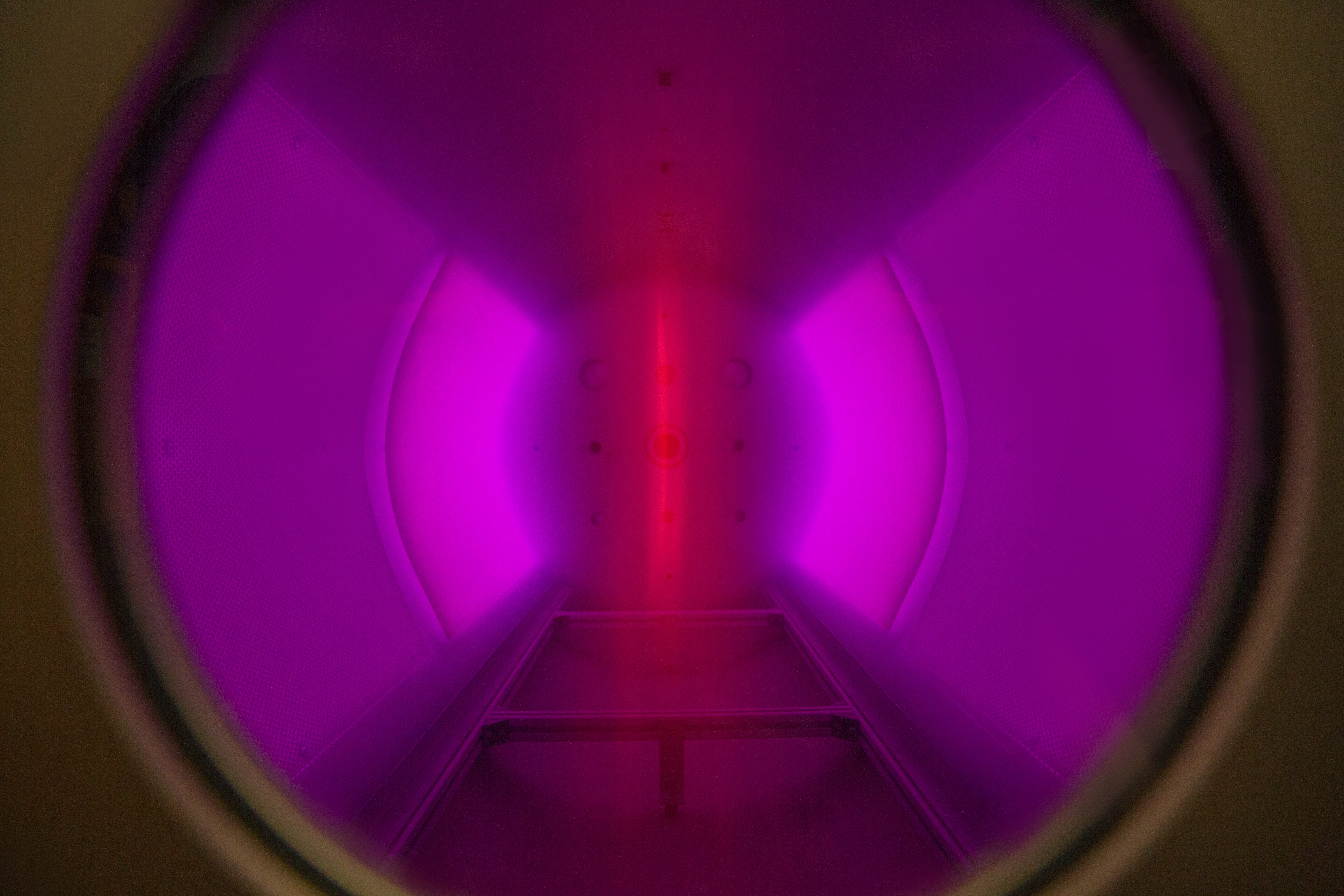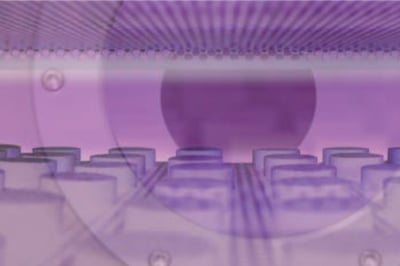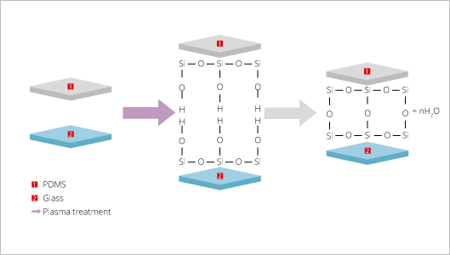Plasma Treatment Articles
Plasma Activation
|
3 min read
Topic:

There are many ways to improve adhesion in the manufacturing process. These improvements will ultimately depend on the current process and identifying the weaknesses currently in that process. Manufacturers can often significantly improve adhesion using a plasma activation treatment incorporated into the manufacturing line.
Manufacturers need to understand adhesion and how it affects their overall product quality. Adhesion is the tendency of different surfaces or particles to cling to one another. This is important because poor adhesion between the two surfaces can lead to low product quality or even overall product failure. The most crucial factor in determining improving adhesion is surface energy. If you can raise the surface energy of the material where the bond fails, the bond will often be significantly improved, and the bond will not fail. Plasma activation can be a great solution to improve surface energy, leading to better adhesion overall.
 Using plasma activation to improve surface energy is an excellent option because it does not introduce new chemicals or materials. Plasma activation works at the molecular level, where you are opening bonds on the surface to receive a new bond immediately after the treatment. When these bonds on a surface material are open, this results in a surface energy increase, which is very important when bonding two different materials. The plasma activation parameters can be adjusted and fine-tuned to accommodate the materials involved to maximize the base material's surface energy that will be bonded to create the best bond possible on that surface.
Using plasma activation to improve surface energy is an excellent option because it does not introduce new chemicals or materials. Plasma activation works at the molecular level, where you are opening bonds on the surface to receive a new bond immediately after the treatment. When these bonds on a surface material are open, this results in a surface energy increase, which is very important when bonding two different materials. The plasma activation parameters can be adjusted and fine-tuned to accommodate the materials involved to maximize the base material's surface energy that will be bonded to create the best bond possible on that surface.
Plasma activation has the benefit of providing the best bond possible to avoid scrap in manufacturing. Scrap in the manufacturing process will lead to wasted money. Any loss of product or material due to poor bonding should be avoided and can lead to much larger losses down the line. Implementing a plasma system to resolve these issues would be extremely beneficial. Poor bonding issues can also lead to the customer's return of products, which is never preferred. When using plasma, these problems can be alleviated and can also improve overall product quality and features.
One major problem with an initial poor bond is that some companies use a primer or siloxination agent. Using a primer in conjunction with glue can compound the problem. If possible, a primer should be eliminated whenever possible. There are a few issues when using a primer, including drying time, generating volatile organic compounds (VOCs), and cost. The production time can undoubtedly be decreased when using a plasma activation process as a primer replacement, and it also helps strengthen the overall bond of the materials. Plasma activation, incorporated into a manufacturing line, would eliminate any need for the primer and is also environmentally friendly as plasma does not generate VOCs.
 Using a plasma activation treatment to bond polydimethylsiloxane (PDMS) is very beneficial. PDMS can be very difficult to bond to glass or other PDMS samples. It is vital to have a clean and activated surface to have a proper bond. Plasma activating the surface with a very brief plasma treatment with air or oxygen enables it to bond very easily to another PDMS or glass sample's surface. This can be done using an MHz generator in a plasma system with a total cycle time under five minutes. The two surfaces can then be bonded together using very little pressure on both sides to create a chemical bond between the molecules on both surfaces (see the image to the right). Since this material is so easily activated, it will increase the potential product sets to many different sizes and geometries. Due to its inert nature and unusual flow properties, PDMS is used frequently in microfluidic chips, and plasma is used to bond these intricately structured channels.
Using a plasma activation treatment to bond polydimethylsiloxane (PDMS) is very beneficial. PDMS can be very difficult to bond to glass or other PDMS samples. It is vital to have a clean and activated surface to have a proper bond. Plasma activating the surface with a very brief plasma treatment with air or oxygen enables it to bond very easily to another PDMS or glass sample's surface. This can be done using an MHz generator in a plasma system with a total cycle time under five minutes. The two surfaces can then be bonded together using very little pressure on both sides to create a chemical bond between the molecules on both surfaces (see the image to the right). Since this material is so easily activated, it will increase the potential product sets to many different sizes and geometries. Due to its inert nature and unusual flow properties, PDMS is used frequently in microfluidic chips, and plasma is used to bond these intricately structured channels.
PDMS is a castable inert silicone that is used to take on the shape or form of the microfluidic channels and structures of the mold it is cast into. These casted structures are formed from raised shapes produced in the bottom of a mold. When the PDMS is cast in the mold and removed, the shapes in the bottom of the mold are transferred into the casted part.
These casted parts are then placed in oxygen plasma with the glass or silicon containing mating parts. When the parts are activated with oxygen plasma and then placed together with precision these parts will bond. The bond characteristics are covalent, meaning the PDMS part and the mating part share electrons producing a very strong bond.
Manufacturing quality products can be a real challenge. Implementing plasma activation into a manufacturing line can be very beneficial to overcome adhesion issues. When adhesion issues are resolved, the result is an overall better, more reliable product. This will also minimize scrap and maximize profits. The bond strength improvement can also be measured using a pull test so it can be quantified. There is also testing the surface energy with a Dyne test or contact angle test. These are all ways in which verification of the plasma treatment can be quantified.
Plasma activation can be very beneficial throughout manufacturing and research applications. By employing the correct chemistry to a surface, almost all surfaces surface energy can be improved to facilitate better adhesion. The results of the plasma activation manufacturing include better overall product quality and profitability. In the research field, plasma activation can aid in developing new products due to the increase in adhesion of previously difficult to bond materials. Plasma systems can be very instrumental in the development and production of various materials and products.
To learn more about the benefits of surface activation in the manufacturing process, please read our article titled "Manufacturer’s Surface Activation Guide for Improved Adhesion."
Plasma: +1 (248) 761 9253
Distribution: +1 (248) 549 8600
Fax: +1 (248) 549 3533
info@thierry-corp.com
Comments